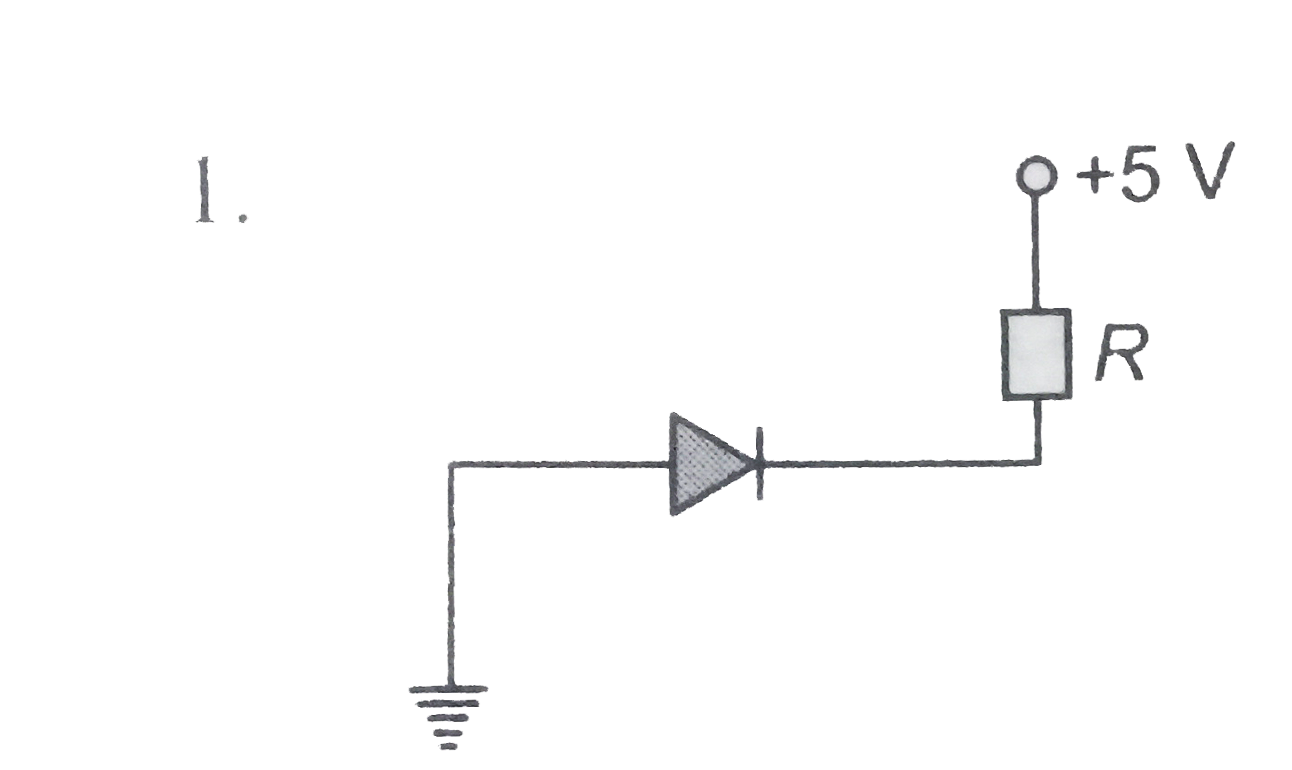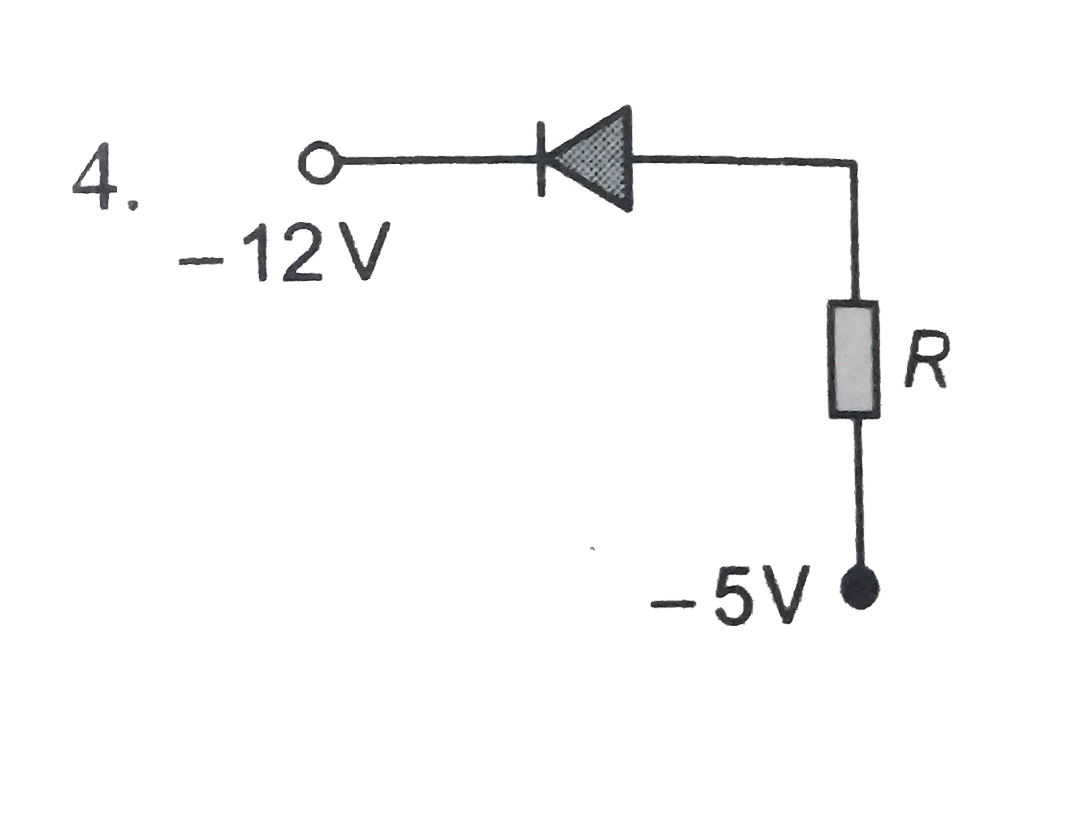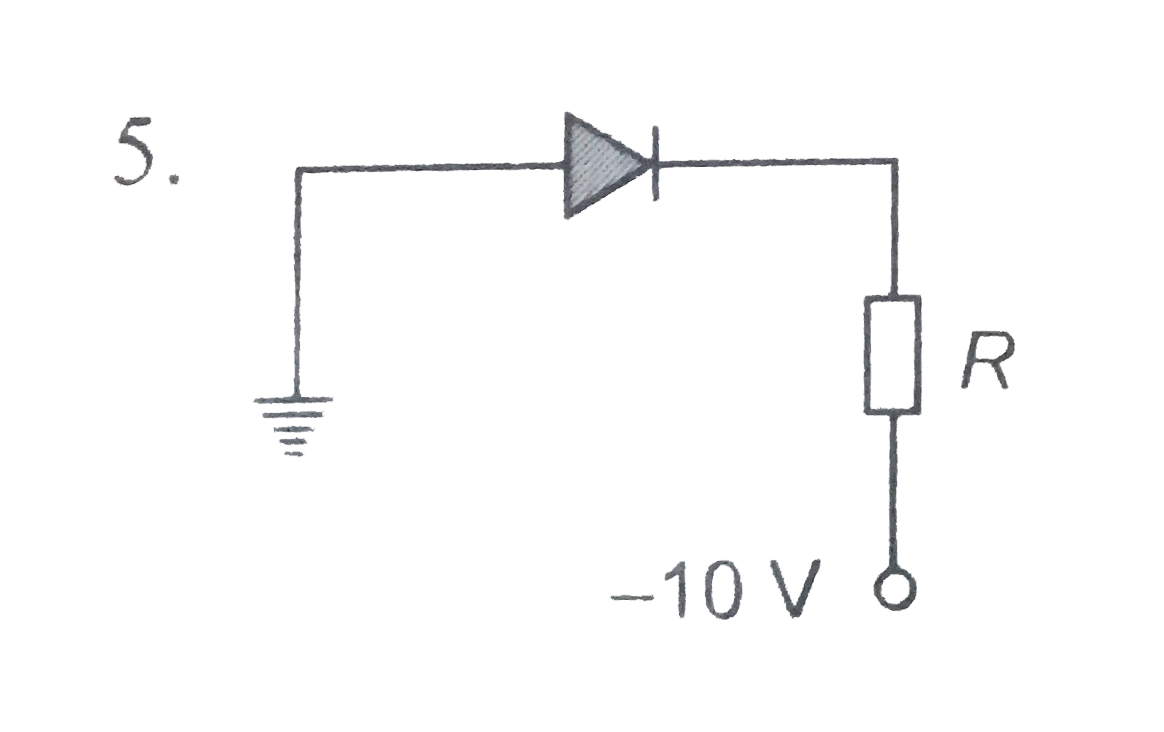Of the diodes shown in the following figures, which one is reverse biased ?




The correct Answer is:C
To determine which diode is reverse biased among the given options, we need to analyze the connections of the p-n junction diodes to the battery terminals. Here’s a step-by-step solution:
Step 1: Understand the Basics of Diode Biasing
A diode has two terminals: the p-type (positive) and the n-type (negative). When connected to a battery, the way these terminals are connected determines if the diode is forward biased or reverse biased:
- Forward Bias: The p-type terminal is connected to the positive terminal of the battery, and the n-type terminal is connected to the negative terminal.
- Reverse Bias: The p-type terminal is connected to the negative terminal of the battery, and the n-type terminal is connected to the positive terminal.
Step 2: Analyze Each Option
We will analyze each option provided in the figures to see which configuration represents reverse bias.
Option A:
- P-type connected to -5V
- N-type connected to -10V
In this case, the p-type is at a higher potential than the n-type (since -5V is greater than -10V). This configuration is not reverse biased.
Option B:
- P-type connected to ground (0V)
- N-type connected to -10V
Here, the p-type is at 0V (ground) and the n-type is at -10V. The p-type is at a higher potential than the n-type, so this configuration is also not reverse biased.
Option C:
- P-type connected to 0V (ground)
- N-type connected to +5V
In this configuration, the p-type is at 0V and the n-type is at +5V. The p-type is at a lower potential than the n-type, which means this configuration is reverse biased.
Conclusion
The diode in Option C is reverse biased.
---
A diode has two terminals: the p-type (positive) and the n-type (negative). When connected to a battery, the way these terminals are connected determines if the diode is forward biased or reverse biased:
- Forward Bias: The p-type terminal is connected to the positive terminal of the battery, and the n-type terminal is connected to the negative terminal.
- Reverse Bias: The p-type terminal is connected to the negative terminal of the battery, and the n-type terminal is connected to the positive terminal.
We will analyze each option provided in the figures to see which configuration represents reverse bias.
- P-type connected to -5V
- N-type connected to -10V
- P-type connected to ground (0V)
- N-type connected to -10V
- P-type connected to 0V (ground)
- N-type connected to +5V
The diode in Option C is reverse biased.
Topper's Solved these Questions
- SEMICONDUCTOR ELECTRONICS : MATERIALS , DEVICES AND SIMPLE CIRCUITS BOOK - NCERT FINGERTPS ENGLISHCHAPTER - SEMICONDUCTOR ELECTRONICS : MATERIALS , DEVICES AND SIMPLE CIRCUITS EXERCISE - HOTS
8 Videos
- SEMICONDUCTOR ELECTRONICS : MATERIALS , DEVICES AND SIMPLE CIRCUITS BOOK - NCERT FINGERTPS ENGLISHCHAPTER - SEMICONDUCTOR ELECTRONICS : MATERIALS , DEVICES AND SIMPLE CIRCUITS EXERCISE - NCERT
8 Videos
- RAY OPTICS AND OPTICAL INSTRUMENTSBOOK - NCERT FINGERTPS ENGLISHCHAPTER - RAY OPTICS AND OPTICAL INSTRUMENTSEXERCISE - NCERT Exemplar
11 Videos
- WAVE OPTICSBOOK - NCERT FINGERTPS ENGLISHCHAPTER - WAVE OPTICSEXERCISE - Assertion And Reason
15 Videos
Similar Questions
In the following, which one of the diodes is reverse biased ?
View SolutionIn the figure, which of the diode is in reverse bias
View SolutionIn the given figure, which of the diodes are forward biased?





View SolutionIn which of the following figures, junction diode is forward biased?
View SolutionOut of following which one is a forward biased diode
View SolutionIn the following figure, the diodes which are forwards biased are :

View SolutionThe V-I characteristic of a diode is shown in the figure. The ratio of forward to reverse bias resistance is

View SolutionThe V-I characteristic of a diode is shown in the figure. The ratio of forward to reverse bias resistance is

View SolutionFor the figure shown, which one is correct?

View SolutionA reverse biased diode is
View Solution
